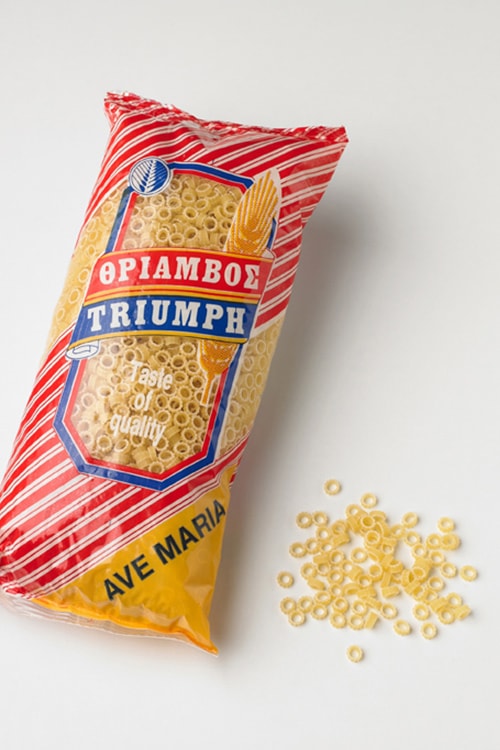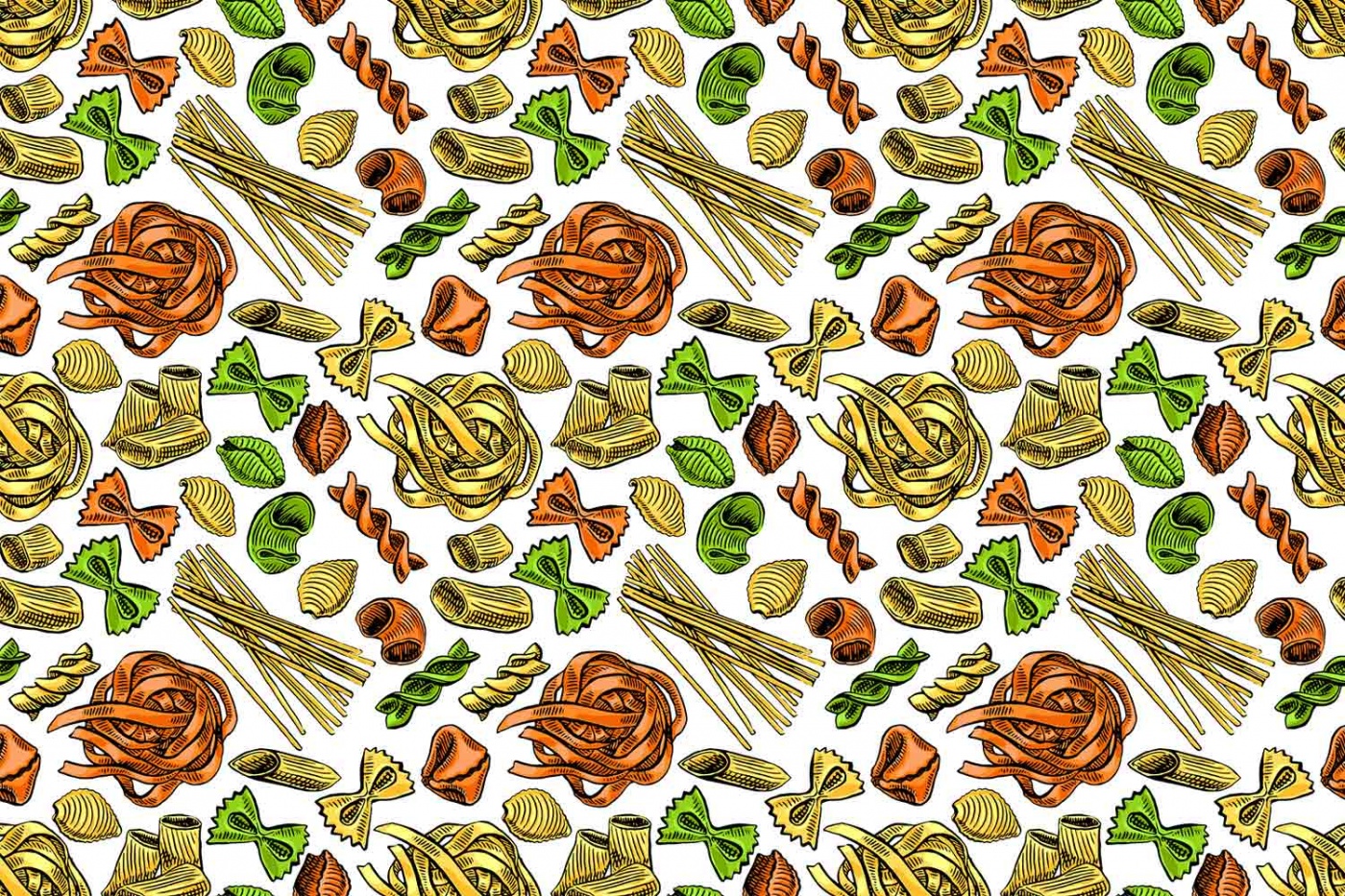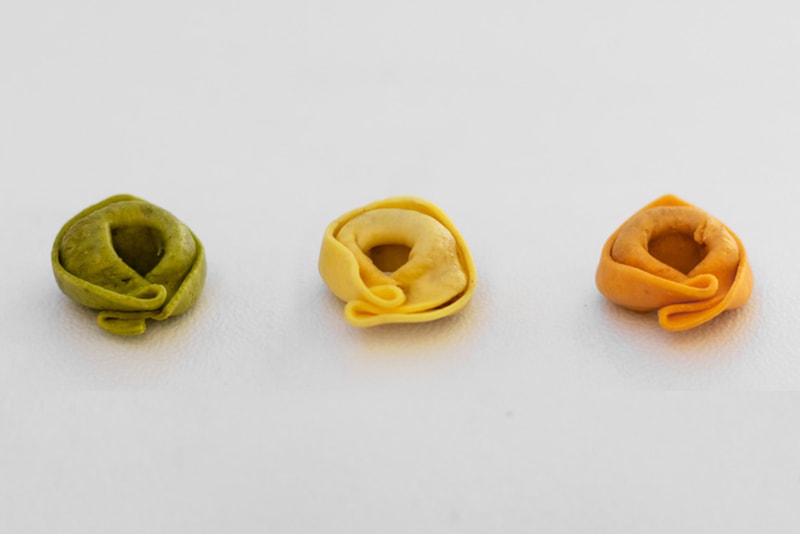The Strange Origins of Pasta
Everyone knows how to enrage an Italian. Simply cook an Italian recipe, completely bastardise it to your own cultural liking, then declare it to be whatever the original is. Hordes of gesticulating people will be at your door.
But a chance discovery of a recipe in a now out-of-print book made me realise that even Italians make these substitutions. In Quando cucinano gli angeli[1], from a recipe for spaghetti alla carbonara, the good Sister Germana uses 125g of cream! How blasphemous! But these are “I Segreti Dei Conventi”, no? Well, we are in the North and spaghetti alla carbonara is a Roman recipe, explained my in-laws. Liberties have and will be taken. And so it is with other Italian recipes as they are augmented, substituted, and changed according to whatever’s available or to suit the tastes of the innovator. I am fascinated, but to tamper the culinary geekiness let me share instead the weirder origins of some pasta shapes.
Ziti
“Zitella is the word for spinster, and from that came the name for the pasta ziti.”
So says my Italian teacher, with the added caveat that one must not refer to a single woman as a zitella. In polite company that is. As the story goes, before the industrial production of pasta made it cheap and easily available everywhere, homemade pasta-making was labour-intensive and was only done for special events or feast days. Sundays are sacred to the Italians, there is the Mass and the long lunch that comes after that tends to leave people well-soaked until Monday comes knocking.
Who then does all the work for lunch while people pray? The spinsters. Just as the nuns labour for the priests thanklessly, these virginal souls undertook the task of kneading, rolling, drying and finally snapping these long, hollow, tubes of pasta.
But stories differ as tales of food origins tend to be. While there are similar explanations, others explain that ziti is the plural form of zito (fiancé) and zita (fiancée). The maccarruni di ziti is a dish served in Sicilian wedding feasts to signify the change of the bride’s role from a zitella to a zita, because zita also means bride. These are words derived from Southern dialects but only zitella is used in Standard Italian. If that is a little confusing, understand that Italy had been existing as individual, warring, city-states with their own languages and cultures only up to recently and this is reflected in the names and types of pasta in the country.
Culinary historian Oretta Zanini De Vita’s The Encyclopedia of Pasta is the first and definitive book of its kind compiling research from ancient texts and first-hand accounts from Italians old enough to remember a time before convenience. Through this painstaking work, I’ve learnt that there are 310 different pasta shapes most of which also have additional and sometimes vastly different names and methods of serving. To return to the ziti as an example, in Molise it is popularly served during the Feast of the Epiphany on January 6th to ward off seeing the devil grinning right at you on your deathbed.
Presumably, thanks to the popularity of baked ziti, lots of New Yorkers would not be seeing him.
Tortellini
E l’oste che era quercio e Bolognese
Imitando di Venere il bellìco
L’arte di fare il tortellino apprese.
(And the innkeeper who was cross-eyed and Bolognese,
Imitating Venus’s navel
Learnt the art of making the tortellino)
Maybe this will scandalise food purists, but the tortellini remind me so much of wonton soup as they’re stuffed with meat and served in a clear broth. Since the sushi buffets here refer to gyoza as ravioli, I’m running with this.
Tortellini’s true origins and recipe are the subject of much academic and cultural bickering between Bologna and Modena, so much so that “on December 7, 1974, the Accademia Italiana della Cucina, Bologna section, and the Confraternita del Tortellino registered with notarial act and deposited with the Bologna Chamber of Commerce the ingredients and quantities of the ‘true and authentic’ tortellino.” But still, every family in Emilia claims to have the true secret of the tortellini.
The Battle of Zappolino fought between Modena and Bologna in 1325 was the inspiration for the mock-heroic poem La Secchia Rapita (the rape of the pail) written by Modena-born Alessandro Tassoni in 1622 wherein he mentions tortelletti as one of the spoils of war in a battle where even Greek Gods took part in it. This poem later inspired La nascita del tortellino (the birth of tortellino which is the singular form of tortellini) by Giuseppe Ceri. The three lines quoted above finish this satirical epic when the Goddess Venus wakes up completely naked in an inn in Castelfranco and finding herself not entangled in the arms of Bacchus and Mars, screams for the innkeeper. Seeing her belly inspired the creation of the tortellini. Situating the story in Castelfranco, a town between Bologna and Modena, Ceri comically “resolves” the disputes over the pasta’s true origins.
Now, perhaps you’re beginning to understand why Italians get stark raving mad in the Facebook comments section of cooking videos. It’s in their blood.
Strozzapreti—Priest stranglers
My first Italian word was mangia which I learnt from Pasolini’s 120 Days of Sodom. Yep, that scene. My next few were a series of blasphemous exclamations which I was surprised to learn are still very much frowned upon today, despite Italy’s background.
The Catholic Church’s stranglehold on Italy had a long history from the 8th Century right up to the overthrowing of the Papal States in 1870. Resentment against the Church wasn’t just confined to the Risorgimento (Italian unification) period but had been brewing for many centuries prior as the corrupt clergy kept amassing power to the disgust and anger of the common people.
Some more visceral legends claim the strozzapreti resemble the shoelaces anarchists used to literally strangle priests, while others relate that it is the anticleric strangler’s implements that were named after the pasta and not the other way round.
Still other, more humorous accounts tell of gluttonous priests literally choking on the pasta because they were so greedy for it or of housewives cursing the clergy as they handmade the pasta. There are likely many different origin tales for the strozzapreti simply because it exists in virtually every region, city and village in Italy, served and made in a myriad of different ways depending on the ingredients available. The main unifying factor is the historical presence of the Catholic Church.
Avemarie
 Image Credit: Triumph Famagusta Pasta Factory
Image Credit: Triumph Famagusta Pasta Factory
But there are also less blasphemous forms of pasta. The Avemarie is one of many pasta shapes that comes with different names. Perhaps ditalini sounds familiar? Small and tube-like, its shape also reminds one of rosary beads. Translated from an online Tuscan news portal, “It is likely that these curious names (certainly not conferred by irreverence) came from the Tuscan countryside where the devout practice of reciting the Rosary in the evening was widespread […] each of the small beads of the rosary indicates the recitation of the Ave Maria (Hail Mary), while the large grains indicate that of a Pater Noster (Our Father). Therefore, to the housewives it seemed natural, by analogy of ‘small grains’ and ‘large grains’ of the rosary to name those two different types of pasta.” According to the Encyclopedia of Pasta, there is a much more charming and still useful reason for its name too.
The Italian practice of reciting prayers to measure the cooking time of food is apparently an old one, it is a useful custom without the convenience of a kitchen timer. The Ave Maria, the Pater Noster, and the Gloria Patri (Gloria) were the usual prayers and praying together as a family whilst the food was cooking was a tradition widely practised across the social classes. As befits its name, the Avemarie is done cooking once you’ve completed one round of Hail Mary. How’s that for a cooking tip?
But did Marco Polo…
No. Let’s put that still enduring piece of gossip to rest. He did not bring it home from China.
According to De Vita, evidence of dried pasta has been found in Italy dating to at least 800 A.D. The busiata, thick-ish long pierced pasta, is the oldest handmade Sicilian pasta that dates to 1000 A.D. 100 years before Marco Polo’s birth, in 1154, the Arab geographer al-Idrisi who lived in Sicily in the court of the Norman King Roger II described:
“In Sicily there is a town called Trabia, an enchanted place endowed with perennial waters and mills. In this town they make a food of flour in the form of strings in quantities such as to supply in addition to the towns of Calabria, those of the Muslim and Christian territories.”
Some have attributed the techniques of making and drying pasta to the Arabs whereas others dispute it. What’s certain is that it wasn’t Marco Polo’s facilitated cultural appropriation. Documented trade in goods including pasta between Norman Sicily and the Republic of Genoa exists from the 12th Century. The strings described by al-Idrisi were known as itryya and when exported throughout the Mediterranean, they were known as fidaws which led to the Castilian fideos thus later evolving into the Italian name fidelini a pasta much thinner than spaghetti. Spaghetti of course simply means small strings though the name itself did not come to be widely used until several centuries later. Finally, Marco Polo describing the Chinese noodle he encountered using the word “pasta” would also mean that he would have already had prior knowledge of it from his hometown.
If the peculiarities of Italian pasta rules seem befuddling, understand that they come from many centuries of ingrained traditions based on regional availability of ingredients. Which means sometimes, even the Italians get it “wrong” too. I’ve found that to be true of virtually any cuisine which their people are proud of. As long as you’re respectful, and don’t claim to know the one true recipe of the dish sacred to the person you’re talking to, you’ll be alright. Take it from me, I have survived serving pasta anointed with fish sauce to Italians.
[1] Literally “When the angels cook” comes from a series called “the secrets of the convents” through which various nuns have published books of different topics. Sister Germana or Suor Germana is a nun known for her cookbooks teaching homestyle classic Italian food. The book was the one that launched her career. I found this first print edition among the possessions of my recently deceased nonna-in-law who was a bookbinder.





